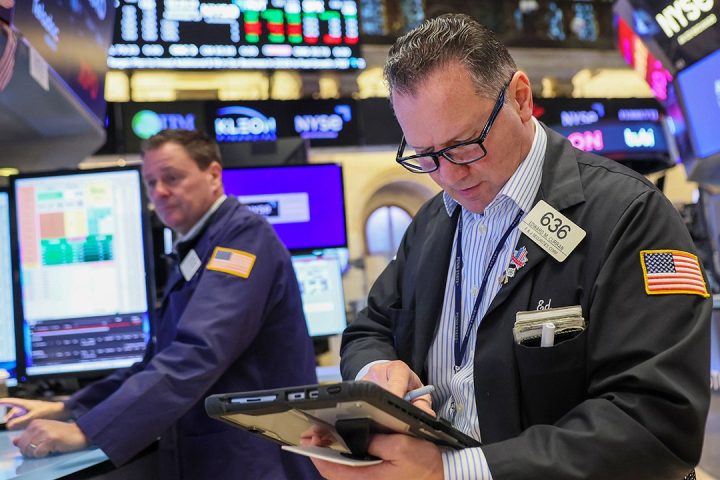Soaring costs on everyday items have many Americans wishing they could skip holiday spending, particularly those who resumed paying student loans in October after a more than three-year pause, with borrowers paying an average of $203 a month, according to a recent survey.
Student loan repayments will make the season unaffordable for 28% of Gen Z and millennials this year, the Credit Karma survey said. That’s compared to just 15% of Gen X and 4% of Boomers. Moreover, 32% of Gen Z and 25% of millennials said they could not afford to travel home for the holidays this year because of student loan repayments.
Overall, inflation and rising costs have roughly 24% of Americans worried about holiday spending. To afford the upcoming festive season, 26% of respondents planned to limit their contributions to savings. In comparison, 23% would reduce their spending on holiday decorations and 22% would schedule fewer holiday parties.
“The holidays are often a joyful time of year, but they can also take a toll on consumers’ wallets,” Credit Karma Consumer Financial Advocate Courtney Alev said. “This year, many Americans have another expense to factor into their holiday budgets: their federal student loan payments – and, if our survey is any indication, it could be what tips consumers over the edge.”
If you’re having trouble making payments on your private student loans, you won’t benefit from federal relief. You could consider refinancing your loans for a lower interest rate to lower your monthly payments. Visit Credible to get your personalized rate in minutes.
COLLEGE TUITION PAYMENT PLANS MAY PUT STUDENT AT RISK: CFPB
Americans plan to take on more debt this holiday
Most Americans (59%) said they planned to take on debt this holiday season, with 28% expecting to rack up $500 in debt and 31% said they would likely borrow more than $500 for the holidays. Of Americans who plan to take on debt, 63% said they planned to borrow to purchase gifts for their family or kids (42%), while 34% expected to go into debt for essentials, like groceries for holiday meals.
Americans now owe $1.08 trillion on their credit cards after borrowing a collective $48 billion during the third quarter of 2023, according to a recent report on household debt from the Federal Reserve Bank of New York.
Credit card balances spiked by $154 billion year over year, notching the most significant increase since 1999, according to the New York Fed. In total, debts increased by $786 billion, with auto loan debts growing by $71 billion, maintaining an upward trend since 2011 and reaching a total of $1.6 trillion. At the same time, Americans have all but depleted pandemic-era savings.
“With banks far more reluctant to provide unsecured consumer credit, based on the Federal Reserve’s Senior Loan Officer Opinion survey, the clear threat is that many struggling households may soon find their credit cards are being maxed out and they can’t obtain more credit,” ING Chief International Economist James Knightley said in a statement.
If you’re struggling with high-interest debt in a troubling economy, you could consider paying it off with a personal loan at a lower interest rate. Visit Credible to compare your options without affecting your credit score.
BUY A HOME IN THESE STATES TO GET STUDENT LOAN DEBT RELIEF
Student loan payments hurt financial health
Of the Americans with student debt, 69% said that it would impact their ability to achieve financial prosperity, according to a recent Santander survey.
Moreover, even those Americans who don’t have student debt can be indirectly impacted by the return of student loans. The survey said that 13% of respondents are helping someone in their household make debt repayments and 2% are paying their loans and someone else’s.
The debt obligation is so onerous that one in four Americans with outstanding student loans said they planned to boycott payments, according to a poll commissioned for Newsweek. And 33% said they would consider refusing to pay.
“Over the course of the student loan payment pause, many consumers who currently have student loans acquired new credit products, increasing their monthly payment obligations,” Liz Pagel, TransUnion senior vice president of consumer lending, said in a statement. “For many consumers, their total monthly payments today, without student loan payments, exceed what they were paying in aggregate in 2020 prior to the pause. Adding the new payments to the mix will be a noticeable payment shock.”
If you have private student loans, you may not benefit from Biden’s student loan relief programs. But you could consider lowering your monthly payments by refinancing your loans to a lower interest rate. Visit Credible to compare options from different lenders without affecting your credit score.
BUYERS PAID 46% MORE FOR MORTGAGES IN 2022, CFPB REPORT SAYS
Have a finance-related question, but don’t know who to ask? Email The Credible Money Expert at [email protected] and your question might be answered by Credible in our Money Expert column.
Read the full article here






